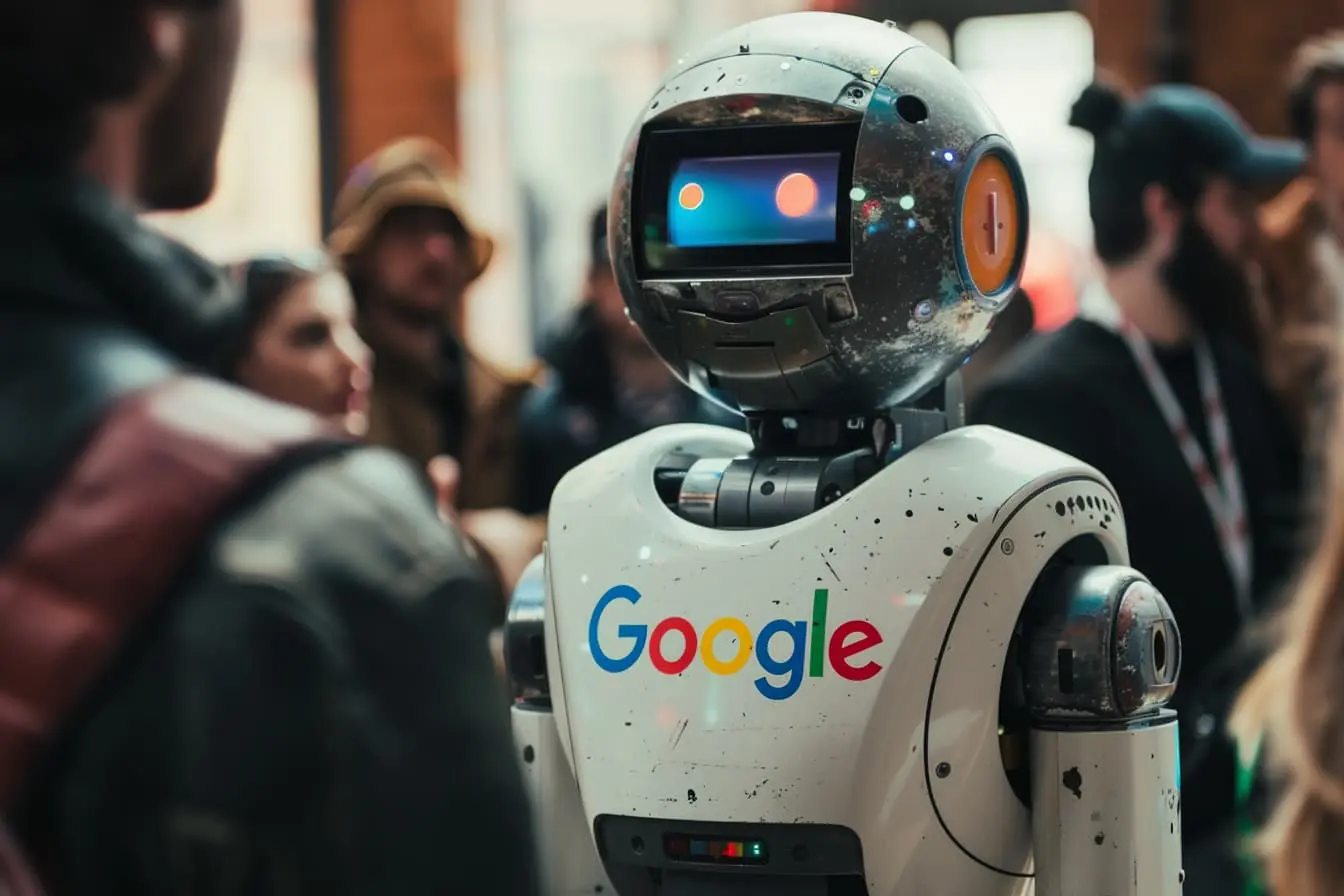
In the digital age, the invisible hand that shapes our online experiences, streamlines our daily tasks, and even influences our understanding of the world is increasingly powered by a complex and ever-evolving force: Artificial Intelligence. At the forefront of this technological revolution stands Google, a company that has not only built the internet’s gateway but has also become a dominant force in the development and deployment of sophisticated AI systems. From the subtle nuances of search results to the conversational fluency of virtual assistants, Google’s AI is woven into the fabric of our modern lives, often operating in the background yet profoundly impacting how we live, work, and connect.
This article delves into the intricate world of Google’s AI systems, exploring their origins, the groundbreaking technologies that underpin them, their current capabilities and applications, the ethical considerations that accompany their advancement, and the exciting possibilities that lie ahead. We will move beyond the surface-level understanding of “AI” and delve into the specific architectures, algorithms, and the dedicated teams of researchers and engineers who are the algorithmic architects of our digital future.
The Genesis of Intelligent Systems at Google: A Journey of Search and Beyond
Google’s foray into AI wasn’t a sudden leap; it was a natural progression rooted in the company’s core mission: to organize the world’s information and make it universally accessible and useful. The initial challenge was to create a search engine that could understand the intent behind user queries and deliver relevant results. This fundamental problem spurred the development of early machine learning algorithms that could learn patterns in text and link documents based on their content and relevance.
The early days of Google Search relied on sophisticated ranking algorithms like PageRank, which, while not strictly AI in the modern sense, laid the groundwork for future advancements. As the volume and complexity of online information exploded, the need for more intelligent and nuanced search capabilities became paramount. This necessity fueled the company’s investment in AI research, leading to the establishment of dedicated AI teams and the acquisition of cutting-edge AI startups.
The Pillars of Google’s AI: Machine Learning, Deep Learning, and Neural Networks
The engine that drives Google’s AI systems is built upon a foundation of powerful computational techniques, primarily centered around machine learning (ML) and its more advanced subset, deep learning (DL).
Machine Learning (ML): At its core, ML involves training algorithms to learn from data without being explicitly programmed. Instead of relying on predefined rules, ML models identify patterns, make predictions, and improve their performance over time by analyzing vast datasets. Google utilizes various ML techniques, including supervised learning (where the algorithm learns from labeled data), unsupervised learning (where the algorithm finds patterns in unlabeled data), and reinforcement learning (where the algorithm learns through rial and error).
Deep Learning (DL): A subfield of ML, deep learning employs artificial neural networks with multiple layers (hence “deep”) to analyze complex data in a hierarchical manner. Inspired by the structure of the human brain, these neural networks can learn intricate features and representations from raw data, enabling them to tackle highly complex tasks such as image recognition, natural language processing, and speech recognition with remarkable accuracy.
Neural Networks: The fundamental building blocks of deep learning are artificial neural networks. These networks consist of interconnected nodes (neurons) organized in layers. Each connection has a weight associated with it, and the network learns by adjusting these weights based on the training data. The ability of deep neural networks to learn intricate patterns and relationships in massive datasets is the key to many of Google’s AI breakthroughs.
Key Google AI Systems and Their Impact on Our Lives
Google’s AI systems are not confined to a single product or service; they are integrated across a vast ecosystem, touching nearly every aspect of our digital interactions. Here are some of the most prominent examples:
Google Search: The cornerstone of Google’s empire, Search has been revolutionized by AI. Algorithms like RankBrain, a deep learning system, help interpret complex queries, understand context, and provide more relevant and personalized search results. AI also powers features like image search, voice search, and the understanding of natural language in queries.
Gmail: Features like Smart Reply and Smart Compose leverage natural language processing (NLP) and machine learning to suggest relevant responses and complete sentences, significantly streamlining email communication. Spam filtering also relies heavily on AI to identify and block unwanted messages.
Google Assistant: This virtual personal assistant is a prime example of Google’s advancements in NLP and speech recognition. Powered by sophisticated AI models, Google Assistant can understand and respond to voice commands, manage schedules, provide information, control smart home devices, and engage in more natural and conversational interactions.
Google Translate: Breaking down language barriers, Google Translate utilizes neural machine translation (NMT) to provide more accurate and fluent translations across numerous languages. NMT models learn the relationships between words and phrases in different languages, leading to significant improvements in translation quality compared to earlier statistical methods.
Google Photos: This photo storage and management service employs AI for features like automatic organization, facial recognition, object detection, and the creation of smart albums and memories. AI algorithms analyze images to understand their content and provide users with intelligent ways to manage and enjoy their photos.
YouTube: AI plays a crucial role in YouTube’s recommendation system, suggesting videos that users are likely to enjoy based on their viewing history and preferences. AI also helps with content moderation, identifying and flagging inappropriate content.
Waymo: Google’s self-driving car project, Waymo, is a testament to the power of AI in the real world. Utilizing a complex array of sensors, cameras, and sophisticated machine learning algorithms, Waymo vehicles can perceive their surroundings, navigate traffic, and operate autonomously.
Health and Research: Google AI is also making significant contributions to healthcare and scientific research. AI algorithms are being used to analyze medical images, predict disease outbreaks, accelerate drug discovery, and personalize treatment plans.
The Technological Marvels Behind the Curtain: Hardware and Infrastructure
The development and deployment of Google’s AI systems require immense computational power. Google has invested heavily in building specialized hardware and infrastructure to support its AI endeavors.
Tensor Processing Units (TPUs): Recognizing the limitations of traditional CPUs and GPUs for AI workloads, Google developed its own custom-designed Tensor Processing Units (TPUs). These specialized processors are optimized for the matrix multiplications and other computations that are fundamental to deep learning, significantly accelerating training and inference times.
Massive Data Centers: Google operates vast data centers around the world to store and process the massive datasets required to train and run its AI models. These data centers are equipped with cutting-edge cooling systems and power management technologies to ensure efficient and sustainable operations.
Cloud-Based AI Services: Google Cloud offers a suite of AI and machine learning services, including TensorFlow (an open-source machine learning framework), Cloud AI Platform, and pre-trained AI models, making these powerful tools accessible to developers and businesses of all sizes.
The Ethical Tightrope: Navigating the Challenges of AI
As Google’s AI systems become increasingly sophisticated and integrated into our lives, a critical conversation surrounding ethics and responsible AI development has emerged. Several key ethical considerations need careful attention:
Bias and Fairness: AI models are trained on data, and if that data reflects existing societal biases, the AI models can perpetuate and even amplify those biases. Ensuring fairness and mitigating bias in AI systems is a crucial challenge. Google is actively working on developing techniques to identify and address bias in its models.
Privacy and Data Security: AI systems often rely on vast amounts of personal data. Protecting user privacy and ensuring the security of this data are paramount concerns. Google has implemented various measures to safeguard user data and provide transparency about how it is used.
Transparency and Explainability: The “black box” nature of some deep learning models can make it difficult to understand how they arrive at their decisions. Increasing the transparency and explainability of AI systems is essential for building trust and accountability.
Job Displacement: The automation capabilities of AI raise concerns about potential job displacement in various sectors. Google is exploring ways to mitigate this impact through reskilling initiatives and focusing on creating new job opportunities related to AI development and deployment.
Misuse and Malicious Applications: Like any powerful technology, AI can be misused for malicious purposes, such as creating deepfakes, spreading misinformation, or developing autonomous weapons. Responsible development and deployment require careful consideration of these potential risks.
Google has established ethical guidelines for AI development and is actively investing in research and initiatives to address these concerns. Their commitment to responsible AI is crucial for building public trust and ensuring that AI benefits humanity as a whole.
The Future Unfolding: Anticipating the Next Frontier of Google AI
The field of AI is constantly evolving, and Google is at the forefront of pushing the boundaries of what’s possible. Looking ahead, we can anticipate several exciting developments in Google’s AI systems:
More Natural and Human-Like Interactions: We can expect even more sophisticated and natural interactions with virtual assistants and other AI-powered interfaces, with improved understanding of context, emotion, and nuance.
Advancements in Personalized Experiences: AI will continue to drive more personalized and tailored experiences across Google’s products and services, anticipating user needs and preferences even more effectively.
Breakthroughs in Healthcare and Science: Google AI is poised to make significant contributions to healthcare, drug discovery, and scientific research, accelerating progress in these critical fields.
Enhanced Creativity and Innovation: AI tools are increasingly being used to augment human creativity in areas like art, music, and design. We can expect to see more innovative applications of AI in these domains.
Integration with the Physical World: As technologies like robotics and the Internet of Things (IoT) advance, we will see greater integration of Google’s AI systems with the physical world, leading to more intelligent and automated environments.
Focus on Sustainability and Efficiency: AI will play a role in optimizing energy consumption, improving resource management, and developing solutions for environmental challenges.
Conclusion: The Ongoing Evolution of Algorithmic Intelligence
Google’s AI systems represent a remarkable achievement in human ingenuity, transforming how we access information, communicate, and interact with the world around us. From the subtle enhancements in our search results to the groundbreaking potential of self-driving cars, AI is no longer a futuristic concept but a tangible reality shaping our present and future.
As we continue to rely on these intelligent systems, it is crucial to approach their development and deployment with a balanced perspective, acknowledging both their immense potential and the ethical considerations that must be carefully navigated. Google’s ongoing commitment to research, innovation, and responsible AI development will be instrumental in shaping the future of this transformative technology, ensuring that the algorithmic architects continue to build a future that benefits all of humanity. The journey of AI is far from over, and with Google at the helm, the next chapter promises to be even more fascinating and impactful.






